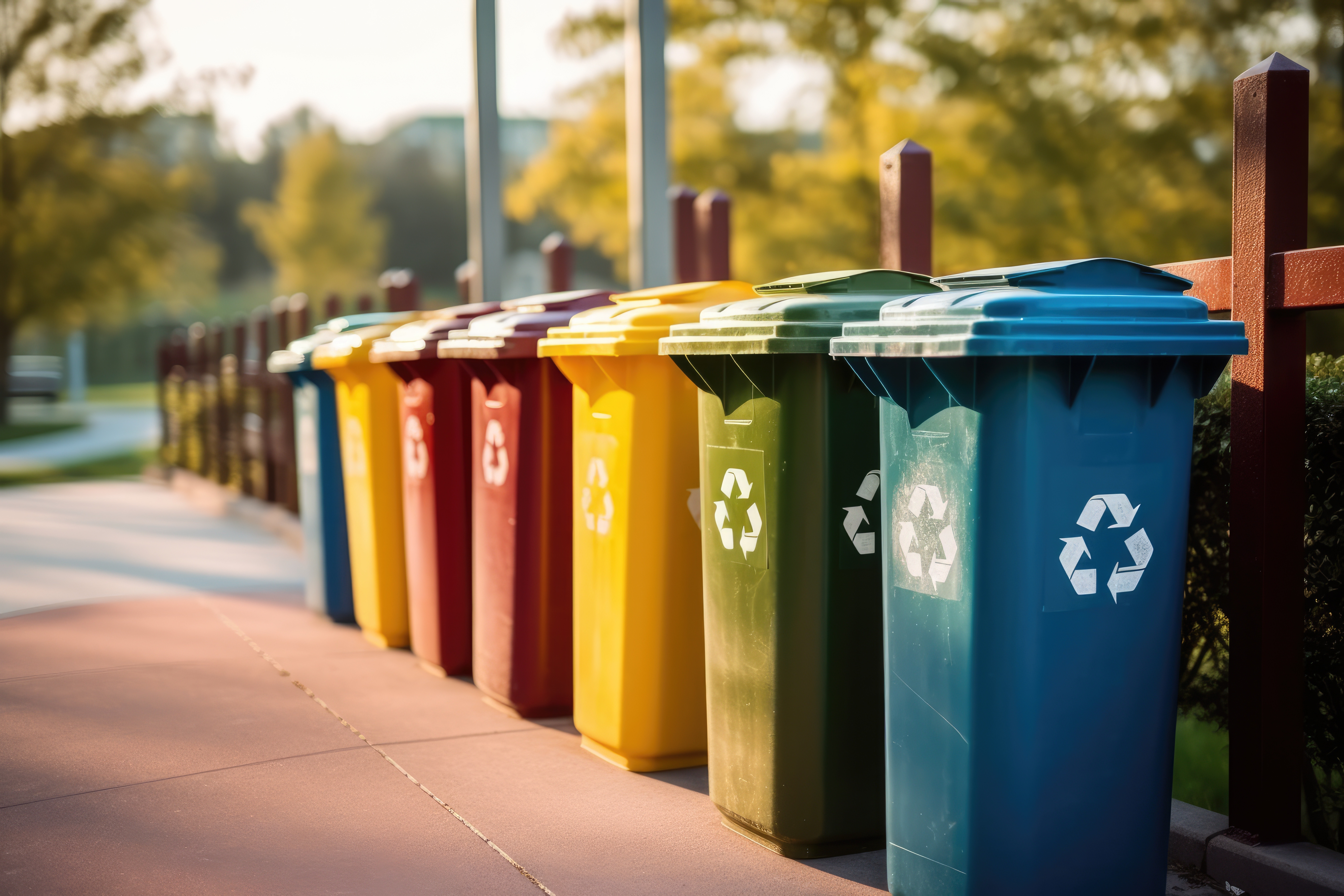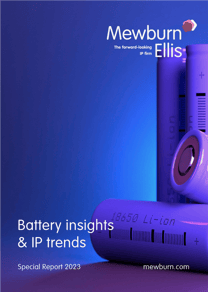
In recent years, the world has seen the significant consequences of our continued heavy dependence on fossil fuels and international energy supplies. Our battle towards increased renewable energy provision and a ‘net zero’ future is more pressing than ever, and increasingly it is apparent that a vital weapon in that battle is the use of batteries to store and deliver the energy provided from renewable resources. Lithium-ion batteries are one of the most ubiquitous technologies, but clearly the availability of lithium is a potential limiting factor. So how are innovators developing the ‘lithium economy’ to align with our sustainable development goals?
The lithium-ion battery
A battery works by storing chemical energy and converting it to electrical energy on demand. Whilst a primary battery is a single-use battery, a secondary battery relies on a reversible reaction, which renders it rechargeable and a better contender to store renewable energy.
Lithium-ion batteries are widely used owing to their ease of manufacture, fast charging, and durability. Lithium itself also has the greatest electrochemical potential of all metals, providing an especially high-power density.
These outstanding electrochemical properties have placed lithium at the heart of electric vehicles (EVs). Thus, given the growing demand for EVs, the world could be facing potential lithium shortages as early as 2025[1]. According to a forecast by McKinsey & Company, lithium-ion battery use is expected to grow at an annual compound rate of approximately 30%. This growth has been encouraging hasty mining of lithium, and as with any traditional mining process, removing raw material from the earth has the potential to cause soil degradation, loss of biodiversity, contamination of water, and greenhouse gas emissions. Commentary from the Institute for Energy Research suggests that lithium extraction can drain around 500,000 gallons of water per metric ton of lithium, and contaminates vital streams with chemicals such as hydrochloric acid[2].
So, although secondary batteries can store energy generated from renewable resources, their manufacture is often far from sustainable.
Turning over a new leaf
Fortunately, given the boom in secondary battery usage, a vast array of research is being carried out in the field. New extraction methods that avoid the damages associated with older extraction methods are being designed.
One of the new ‘environmentally friendly’ methods is Direct Lithium Extraction (DLE), which can be broadly split into three further types:
- lithium bonding (adsorption), in which lithium chloride molecules in a feedstock such as brine physically adsorb onto a sorbent before being removed by a strip solution;
- ion exchange, where the lithium ions in the feedstock are swapped for other positive ions in a solid ion exchange material, before being subject to a further ion exchange to release them; and
- solvent extraction, where a liquid phase removes lithium chloride or lithium ions from the feedstock by preferential solubility.
DLE enables a more sustainable lithium supply, with a much smaller environmental footprint. It extracts lithium much faster than conventional evaporation methods and consumes far less water, with most of the brine feedstock being returned after extraction. DLE can also be powered by a renewable resource, such as geothermal energy[3].
As an example of what can be achieved, Watercycle Technologies Ltd, a UK-based start-up company currently looking to raise their next funding round, are focusing their efforts on the sustainable extraction of lithium and other critical minerals. They are taking their patented Direct Lithium Extraction and Crystallisation (DLECTM) process out of the lab and testing it at pilot scale over the next 12 months. Their method uses membrane technology to extract lithium with a recovery rate of over 90%. Dr Seb Leaper, CEO, explains that
“the membrane acts like a sieve, essentially like a sponge that selectively absorbs lithium, capturing it and releasing it as required”
This process not only extracts lithium with essentially no waste, but also recovers all the water used in the process as fresh water.
Developments like this are offering promising methods of providing the essential minerals present in batteries; they circumvent the criticism faced by traditional lithium mining methods and are paving the way to the sustainable storage of renewable energy.
However, lithium resources are still finite; a vast quantity of ‘available’ lithium is tied up as part of existing batteries. End-of-life treatment of those batteries to release the lithium back into the economy is an ever more important resource stream.
What about recycling?
Battery recycling is vital for the sustainable use of renewable energy. It is the missing link in the circular life cycle of batteries and a completely renewable energy provision.
Unfortunately, extensive research and development into lithium-ion batteries has led to a multitude of different physical configurations, cell types, and cell chemistries. Moreover, commercial interests mean that manufacturers remain secretive about the exact composition of their battery cells. This presents a challenge for battery recycling since each battery might require a different approach to materials reclamation, rendering automation much more difficult[4].
Currently, only approximately 5% of lithium-ion batteries are recycled but measures are being taken to increase this figure. For instance, the Society for Automotive Engineers and the Battery Association of Japan have both recommended including machine-readable labels on batteries, which would assist somewhat in automating their recycling. Additionally, national and international targets are being put in place to increase the proportion of lithium-ion batteries that are recycled and to make battery recycling more efficient (as explained in our Battery Special Report).
As put by Dr Ahmed Abdelkarim, CTO of Watercycle Technologies Ltd, there will come a point where “the lithium in batteries isn’t coming from the ground, it’s coming from previous batteries...the economics of lithium battery recycling will turn the tide”.
The economic balance between extraction of ‘new’ lithium and reuse of ‘old’ lithium is gradually shifting. Watercycle Technologies aim to address both sides of the equation and as such are developing their own lithium-ion battery recycling process alongside their DLECTM methodologies. Recently, their technology has enabled the extraction of graphite and lithium carbonate consecutively from spent lithium-ion batteries – an exciting development in the field!
But an important step here will be developing recycling technologies that are more agnostic as to the nature of the battery being recycled. It is hard to see how bespoke recycling streams for individual battery types can become viable; we expect that innovation in broad applicability is needed to really kickstart this industry and “turn the tide”.
Outlook
Lithium is a potential foundation of sustainable provision of renewable energy. Although traditional mining methods may be misaligned with sustainability targets, recent technological developments put us well on the way to providing ‘green lithium’.
More environmentally friendly methods of extracting lithium at the start of the chain, and more efficient ways of recycling it at the end, can combine to generate a sustainable circular economy for lithium. Within those steps there are ample opportunities for innovation, whether it is in reaction chemistry or plant engineering – it will be exciting to see how these can combine to change our view of the environmental impact of lithium-ion batteries.
References
- The role of critical minerals in clean energy transitions (https://www.iea.org/reports/the-role-of-critical-minerals-in-clean-energy-transitions/executive-summary)
- The environmental impact of lithium batteries (https://www.instituteforenergyresearch.org/renewable/the-environmental-impact-of-lithium-batteries/)
- The National Renewable Energy Laboratory: ‘Using Direct Lithium Extraction to Secure U.S. Supplies (https://www.nrel.gov/news/program/2021/using-direct-lithium-extraction-to-secure-us-supplies.html)
- Harper, G., Sommerville, R., Kendrick, E. et al. Recycling lithium-ion batteries from electric vehicles. Nature 575, 75–86 (2019). https://doi.org/10.1038/s41586-019-1682-5
|
|
Battery insights & IP trends - Special Report 2023This report demonstrates how innovation is blossoming in all areas of the battery ecosystem driven by both pressures and incentives; and how patents are playing a big part in protecting inventions and forming one branch of a wider commercial strategy. |
Thea is a trainee patent attorney in our chemistry team. Thea graduated from the University of Oxford with a Master’s degree in chemistry and was awarded a scholarship for academic work (2020-2021). Her final year project focused on the template-directed synthesis of porphyrin macrocycles and the synthesis of nitrogen-based nanoring templates.
Email: thea.toutoungy@mewburn.com
Sign up to our newsletter: Forward - news, insights and features
Our people
Our IP specialists work at all stage of the IP life cycle and provide strategic advice about patent, trade mark and registered designs, as well as any IP-related disputes and legal and commercial requirements.
Our peopleContact Us
We have an easily-accessible office in central London, as well as a number of regional offices throughout the UK and an office in Munich, Germany. We’d love to hear from you, so please get in touch.
Get in touch



